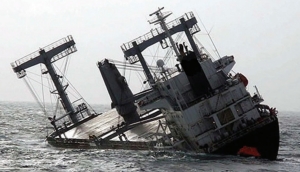


(Posted on 20/07/20)
Large shipping losses are at a record low having fallen by over 20% year-on-year, according to marine insurer Allianz Global Corporate & Specialty SE’s (AGCS) Safety & Shipping Review 2020. However, the coronavirus crisis could endanger the long-term safety improvements in the shipping industry for 2020 and beyond, as difficult operating conditions and a sharp economic downturn present a unique set of challenges.
“Coronavirus has struck at a difficult time for the maritime industry as it seeks to reduce its emissions, navigates issues such as climate change, political risks and piracy, and deals with ongoing problems such as fires on vessels,” says Baptiste Ossena, Global Product Leader Hull Insurance, AGCS. “Now the sector also faces the task of operating in a very different world, with the uncertain public health and economic implications of the pandemic.”
The annual AGCS study analyzes reported shipping losses over 100 gross tons (GT) and also identifies 10 challenges of the coronavirus crisis for the shipping industry which could impact safety and risk management. In 2019, 41 total losses of vessels were reported around the world, down from 53 12 months earlier. This represents an approximate 70% decline over 10 years and is a result of sustained efforts in the areas of regulation, training and technological advancement, among others. More than 950 shipping losses have been reported since the start of 2010.
The shipping industry has continued to operate through the pandemic, despite disruption at ports and to crew changes. While any reduction in sailings due to coronavirus restrictions could see loss activity fall in the interim, the report highlights 10 challenges that could heighten risks. Among these are:
“Ship-owners also face additional cost pressures from a downturn in the economy and trade,” says Captain Rahul Khanna, Global Head of Marine Risk Consulting at AGCS. “We know from past downturns that crew and maintenance budgets are among the first areas that can be cut and this can impact the safe operations of vessels and machinery, potentially causing damage or breakdown, which in turn can lead to groundings or collisions. It is crucial that safety and maintenance standards are not impacted by any downturn.”
According to the report, the South China, Indochina, Indonesia and Philippines maritime region remains the top loss location with 12 vessels in 2019 and 228 vessels over the past decade – one in four of all losses. High levels of trade, busy shipping lanes, older fleets, typhoon exposure, and safety issues on some domestic ferry routes are contributing factors. However, in 2019, losses declined for the second successive year. The Gulf of Mexico (4) and the West African Coast (3) rank second and third.
Cargo ships (15) accounted for more than a third of vessels lost in the past year, while foundered (sunk/submerged) was the main cause of all total losses, accounting for three in four (31). Bad weather accounted for one in five losses.
Torvald Klaveness has announced the decision to consolidate all digital services under Klaveness Digital... Read more
The International Association of Dry Cargo Shipowners (INTERCARGO) has renewed its call for straightforward... Read more
The Swedish Club has delivered strong results for 2024, posting a USD 34 million profit and significantly... Read more
In line with NORDEN’s positive long-term outlook for Capesize freight rates, the company have... Read more
OrbitMI, a global provider of maritime software and data products, has expanded its workflow capabilities... Read more
Current ClassNK Senior Vice President Hayato Suga has been appointed as President & CEO as well... Read more
The surge in demand for Cape Size bulk carriers will continue for another six weeks, driven on by increased... Read more
OrbitMI, a leading provider of maritime SaaS software, has announced that Istanbul-based Statu Shipping... Read more
“The International Association of Dry Cargo Shipowners (INTERCARGO) is deeply saddened by the... Read more
As the shipping industry continues its transition to carbon-neutral fuels, ammonia and hydrogen are... Read more